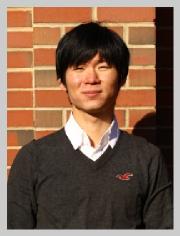Koohee Han
| PhD, Chemical Engineering, 2018 North Carolina State University M.S. Chemical Engineering, 2013 North Carolina State University B.S. Chemical Engineering, 2011 University of Seoul, Seoul Korea Curriculum Vitae |  |
Research Focus: Field-Driven Assembly of Anisotropic Patchy Particles for Soft Microbotics
We have shown earlier how metallo-dielectric Janus/patchy spheres and microcubes, acquire complex polarization pattern in electrical and magnetic fields, leading to multidirectional interactions. We present a novel approach for assembling metallo-dielectric microcubes into soft robotic components, which may find applications in fields such as microscale manufacturing and active microfluidics. Their potential is illustrated in a preliminary way by making motile, reconfigurable and self-folding chains from patchy microcubes, which possess repeated bending motions when actuated by an external magnetic field. The residual polarization of the metal-coated facets leads to directional forces between the neighboring particles and between the particles and the field. The dipole-dipole and field-dipole interactions lead to dynamic reconfiguration. Depending on the cube-to-cube binding conformations the assembled chains have distinct responses to the external field. In the case of cis-conformation, the junction between two cubes can be actuated reversibly by a pulsating magnetic field, whereas in the trans-conformation cube-to-cube overlap makes the junction rigid and thus restricts the bending of the chain. Consequently, the sequence of cis- and trans conformations in the chain determines how the chain will respond and fold in a field and after it is turned off. We also seek to establish fundamental understanding and identify means of control of the chain dynamics. On this basis we design and demonstrate a microbot prototype capable of grabbing and transporting target objects.

Figure 1: Capture and transportation of a cell by a microbot prototype.
Publications
News Reports
C&E News (ACS) – “Magnetic fields cause microcubes to respond like mini robots”
EurekAlert! (AAAS) – “Microbot origami can capture, transport single cells”
NC State Press release – “Microbot origami can capture, transport single cells”
WIRED – “Watch a micro ‘Pac-man’ capture a live cell”
TechCrunch – “These tiny modular ‘microbots’ can change shape to capture single cells”
Phys.org –“Microbot origami can capture, transport single cells”
ScienceDaily – “Microbot origami can capture, transport single cells”
